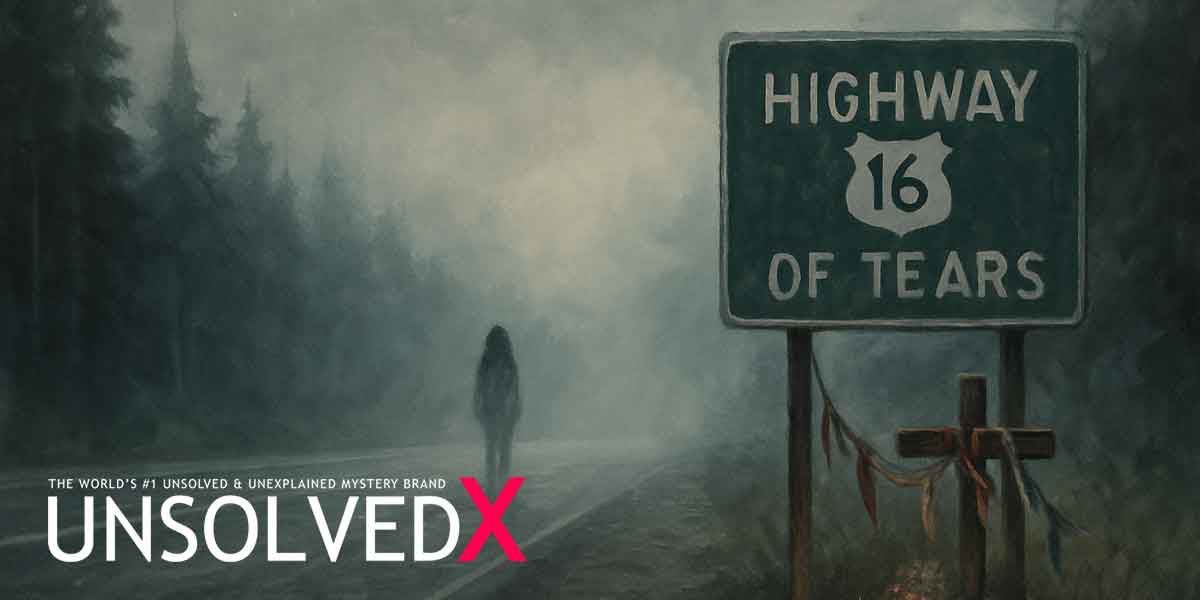A Corridor Shrouded in Tragedy
The Highway of Tears, a 719-kilometer stretch of Highway 16 between Prince George and Prince Rupert in British Columbia, Canada, is not just a road but a haunting symbol of loss and unresolved grief. Since the highway’s completion in 1970, dozens of women, predominantly Indigenous, have vanished or been found murdered along this isolated route, earning it a name coined in 1998 by Florence Naziel during a vigil in Terrace, British Columbia, as she reflected on the families weeping for their loved ones. The exact number of victims is contested, with the Royal Canadian Mounted Police (RCMP) citing 18 cases under their Project E-PANA investigation, while Indigenous organizations and local advocates, such as Gladys Radek, aunt of victim Tamara Chipman, estimate the toll could exceed 40, possibly reaching as high as 600 according to some claims. The disproportionate number of Indigenous women among the victims ties this mystery to the broader crisis of Missing and Murdered Indigenous Women and Girls (MMIWG), highlighting systemic issues like poverty, lack of transportation, and alleged investigative biases.
The region’s isolation amplifies the tragedy. Flanked by dense forests, rugged mountains, and remote First Nations communities, Highway 16 lacks reliable public transit, forcing many residents to hitchhike—a practice that has made vulnerable women easy targets. Until December 2024, much of the highway had no cellular service, complicating efforts to seek help or report crimes. The soft soil and presence of carnivorous scavengers often obscure evidence, making it easier for perpetrators to evade detection. Jessica McDiarmid, a journalist who grew up near the highway and authored Highway of Tears, underscores how these geographical and social factors create a perfect storm for predators, with systemic indifference exacerbating the crisis.
The Faces and Stories Behind the Numbers
The victims of the Highway of Tears are more than statistics; they are daughters, sisters, and mothers whose stories resonate with pain and resilience. Among the earliest cases is Gloria Moody, a 26-year-old mother of two from the Bella Coola Indian Reserve, found dead in October 1969, naked and beaten, marking the grim beginning of the highway’s dark legacy. Monica Jack, just 12 years old, vanished in 1978 while riding her bike; her remains were discovered 17 years later, with Garry Taylor Handlen later charged in her murder. Ramona Wilson, a 16-year-old baseball enthusiast, disappeared in 1994 en route to a dance, her remains found 10 months later near Smithers airport. Tamara Chipman, last seen in 2005, left behind a toddler, and her aunt’s activism has kept her case in the public eye. These stories, detailed in documentaries like Finding Dawn by Métis filmmaker Christine Welsh, reveal the human toll and the cultural devastation felt by Indigenous communities.
The RCMP’s Project E-PANA, launched in 2005, initially focused on nine cases but expanded to 18 by 2007, covering incidents from 1969 to 2006 along Highways 16, 97, and 5. Despite interviewing over 60,000 people and identifying 1,400 persons of interest, only a few cases have been solved. Bobby Jack Fowler, an American drifter, was linked via DNA to the 1974 murder of 16-year-old Colleen MacMillen, and Cody Legebokoff, one of Canada’s youngest serial killers, was convicted in 2014 for four murders, including that of 15-year-old Loren Leslie. Yet, most cases remain unsolved, fueling speculation of multiple perpetrators. Carrier Sekani Family Services and their Highway of Tears Initiative, born from a 2006 symposium, advocate for justice and support families, emphasizing that the true number of victims likely exceeds official counts due to differing criteria.
A Call for Justice and Change
The ongoing mystery of the Highway of Tears is not just about unsolved crimes but a broader societal failure. Systemic issues—poverty, intergenerational trauma from residential schools, and inadequate infrastructure—create vulnerabilities that predators exploit. Human Rights Watch has reported British Columbia as having the highest number of unsolved murders of Indigenous women in Canada, with young Indigenous women five times more likely to die violently than their non-Indigenous counterparts. The lack of action until 2005, when Project E-PANA was formed, and the disproportionate media attention given to non-Indigenous victim Nicole Hoar in 2002, as noted by Gladys Radek, point to systemic biases that have hindered investigations. Initiatives like the Highway of Tears Symposium Recommendations Report, which includes 33 recommendations for prevention, emergency readiness, and victim support, aim to address these gaps, with recent efforts like new billboards and a $75 million investment to expand cell coverage by 2027 showing some progress.
The fight for justice continues through grassroots efforts and media. Highway of Tears, a 2015 documentary narrated by Nathan Fillion, and VICE’s Searchers: The Highway of Tears mini-series highlight the stories of victims and their families’ relentless pursuit of answers. That Lonely Section of Hell by Lorimer Shenher offers a former detective’s perspective on investigative shortcomings. For those seeking to explore this mystery further, Carrier Sekani Family Services provides resources and a toolkit for families of the missing, while the National Film Board hosts Finding Dawn online. The Highway of Tears remains a stark reminder of a crisis that demands not just answers but systemic change to protect the vulnerable and honor the lost.










Comments
Comments section coming soon!